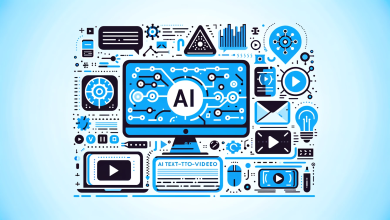
AI tools have never been more accessible. Cloud models deploy in days. APIs connect in hours. Yet 70-85% of AI initiatives fail to deliver value.
Your company isn’t struggling with AI because of technical limitations. You’re failing because transforming how people work is a lot harder than implementing new technology.
This massive gap between investment and outcomes points to one clear conclusion: the biggest obstacle to successful AI transformation isn’t your tech stack, it’s your organization’s culture.
The Truth About AI Adoption Culture
While everyone fixates on model selection and technical integration, research shows that culture often plays a bigger part in AI success than technology.
The organizations that succeed with AI share specific cultural traits that money can’t buy. They’ve built psychological safety, aligned incentives, transparent communication, and leadership that frames AI as augmentation rather than replacement.
Your tech stack is a commodity. Your culture is your competitive edge.
The Cultural Immune Response
Organizations develop powerful antibodies against disruption. These defense mechanisms aren’t irrational, they’re protective, guarding the established ways of working.
When your AI initiative triggers these defenses, technical excellence becomes irrelevant. The most sophisticated algorithm stands no chance against determined human resistance.
Here’s where your AI initiatives are actually getting blocked:
The Existential Threat
“If AI can do my job, what happens to me?”
This fundamental question drives resistance beneath surface objections about accuracy or reliability. Your employees aren’t worried about “quality control,” they’re concerned about their jobs and economic security.
McKinsey research documents this pattern across industries where technically sound AI fails. When employees see AI as a threat rather than a benefit, resistance becomes inevitable, particularly when leadership doesn’t address these concerns directly.
The Middle Manager Squeeze
Middle managers face an impossible dilemma during AI transformations. They’re asked to implement technology that directly challenges their role.
A Deloitte study found this pattern repeatedly. Even when executives support AI and employees are open to trying it, adoption can fail if middle managers don’t see what’s in it for them, especially when their performance is judged by old systems.
When your reward systems contradict your AI ambitions, you’ve structurally guaranteed resistance.
The Incentive Mismatch
McKinsey’s research also revealed a pattern seen across industries. Million-dollar predictive maintenance systems were ignored while managers continued running equipment to failure. The reason isn’t technological distrust, it was misaligned incentives.
When you evaluate plant managers on monthly uptime percentages, but your AI recommends preventative shutdowns that hurt those numbers, the outcome is predictable. Rational employees will protect their performance metrics and ignore even the most accurate AI recommendations.
What Cultural Success Looks Like
Organizations that succeed in AI adoption focus less on technological sophistication and more on reimagining their cultural operating system. Here’s what works:
Elevate, Don’t Eliminate
Financial Stability Board research showed how leading financial institutions succeeded with anti-money laundering AI by explicitly designing systems to support analysts rather than replace them, investing more in redesigning their career paths than in tuning algorithms.
The results were impressive, reduced false positives, increased investigative capacity, and decreased analyst turnover, despite the automation of routine tasks.
The key wasn’t better technology but a culture change to AI as a career improvement tool rather than a replacement threat.
Create Safe-to-Fail Zones
Leading retailers created “innovation zones” where managers could test AI inventory systems without fear of poor performance reviews when results initially lagged behind traditional methods.
This safety turned hesitant managers into enthusiastic adopters who willingly shared AI strategies across the organization.
The real competitive edge wasn’t the algorithms themselves, but a culture where people felt safe trying new approaches.
Put Domain Experts in Control
The New England Journal of Medicine found successful healthcare AI implementations overcame physician resistance through clinician-led governance. Trusted doctors served as “AI champions” and had significant control over how algorithms fit into clinical workflows.
When AI helps experts make better decisions instead of limiting their choices, it’s easier for them to embrace it without feeling like their expertise is under attack.
Generally speaking, they’re more likely to accept tools that support their work and resist those that replace their judgment, especially when their professional status is at stake.
Five Culture-First Implementation Steps
To avoid the costly cycle of AI investment without adoption, prioritize these five cultural interventions before your next technology deployment:
- Map Your Cultural Environment
Before selecting tools, understand your cultural setting. Where is knowledge hoarded versus shared? How are decisions really made? Where is power concentrated? How is performance measured?
Quick Win: Run an anonymous survey focused on information flows and how failure is handled. These cultural indicators predict AI adoption success better than technical readiness assessments.
- Reward AI Use
Review your entire incentive structure, bonuses, promotions, recognition programs, to ensure they reward AI-enhanced productivity rather than previous measures.
Quick Win: Create visible “early adopter advantages” where teams using AI receive meaningful benefits, not just acknowledgment but tangible career advancement and compensation rewards.
- The Middle Manager Transformation
Stop treating middle managers as obstacles and start engaging them as designers of the new work environment.
Quick Win: Form a middle-management council giving them direct input into how AI will reshape workflows and evaluation criteria in their domains. Their engagement will dramatically increase adoption.
- Build Visible Safety Nets
Address career anxieties directly with concrete transition plans for roles that may be phased out due to automation.
Quick Win: Establish a “skills transition program” with guaranteed pathways to relevant roles for employees whose current functions will be significantly automated.
- Practice Radical AI Transparency
Nothing creates resistance like overpromising. Be very clear about what your AI systems can and cannot do.
Quick Win: Create a balanced scorecard for each AI initiative that tracks both technical performance and human factors like user satisfaction and workflow integration. Review these metrics frequently and openly with affected teams.
The Real Competitive Edge in AI Adoption Culture
As AI tools become more commoditized, the real competitive edge won’t come from having the best algorithms or prompts, but from building a culture that uses these tools effectively.
Technical advantages last weeks. Cultural advantages last years.
For executive teams, this requires a fundamental mindset shift, recognizing that successful AI implementation depends more on organizational psychology than technical capability.
Ask yourself this question: What’s harder in your organization, building a chatbot, or getting people to actually use it?
For most organizations, the answer shows the real challenge, and it’s not about better technology.





